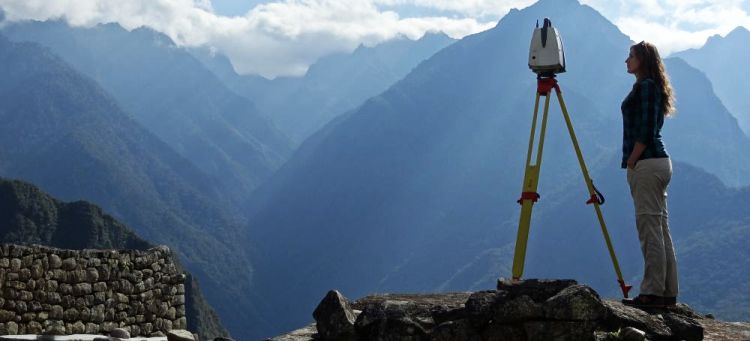YOUR BROWSER IS OUT-OF-DATE.
We have detected that you are using an outdated browser. Our service may not work properly for you. We recommend upgrading or switching to another browser.
Date: 18.10.2020 Category: awards, general news, science/research/innovation
In recognition of her doctoral thesis, Anna Kubicka, PhD, Eng, Arch. from the Faculty of Architecture, has been awarded the Prime Minister's prize. The researcher confirmed the way the imperial system of Inca measures worked by taking measurements and analysing data collected in the 15th century ceremonial and residential complex of Machu Picchu located in today's Peru.

The findings of Dr Anna Kubicka are of great importance to researchers dealing with the history and culture of the Incas. The scientist from WUST’s Faculty of Architecture confirmed that the measurements of the Machu Picchu city plan were supervised by imperial engineers who used the measurement system that was obligatory for them. Thus, the dimensions of the buildings (as well as their elements) erected in this important Inca centre didn’t depend on the trade tradition of the groups of workers working periodically on the city’s construction but were strictly defined by the administration of the 15th-century empire ruled by Pachacuti Inca Yupanqui. Dr Kubicka also established that the engineers used two systems.
– So far, research into the system of measurements used by the Incas has mainly relied on source materials, i.e. 16th and 17th-century chronicles written by the Spanish who colonised those areas as well as dictionaries of the Quechua language, which was used by the Incas - says Dr Kubicka. – They contain information about anthropometric measurements, but we don’t know what values were assigned to them. Scientists only suspect that since the average citizen of the Inca empire was about 1.6 m tall, their elbow could have been between 40 and 45 cm. However, there hasn’t been any research consisting in an analysis of a series of dimensions of buildings and their elements to find this basic module – she stresses.
Such metrology analyses were therefore carried out by Dr Kubicka, who used measurements taken between 2010 and 2017 during the field research works in Machu Picchu. The field measurements were conducted by employees of the Machu Picchu National Archeology Park, together with the 3D Scanning and Modelling Lab team headed by Professor Jacek Kościuka from Wrocław University of Science and Technology, which Anna Kubicka, a doctoral student at the time, joined after some time.
 The researcher established that the Incas used two quanta, i.e. modules, to measure out their buildings. The basic one was 42 cm long, corresponding to the length of the elbow (khococ). The second one, which was 54 cm, is a so far unknown measure which doesn’t originate directly from the length of any part of the human body. – I call it the "royal elbow" because it was a unit used to measure out facilities of higher rank, and such a name was also used in the system of measurements of other ancient cultures – adds Dr Kubicka.
The researcher established that the Incas used two quanta, i.e. modules, to measure out their buildings. The basic one was 42 cm long, corresponding to the length of the elbow (khococ). The second one, which was 54 cm, is a so far unknown measure which doesn’t originate directly from the length of any part of the human body. – I call it the "royal elbow" because it was a unit used to measure out facilities of higher rank, and such a name was also used in the system of measurements of other ancient cultures – adds Dr Kubicka.
For her analyses, Dr Kubicka used the cosine quantogram method, developed by the British researcher Kendall in 1974 to analyse length measurements in megalithic structures. To hugely simplify it, the method consists in searching, in a series of measurement data, for an indivisible unit of measurement (i.e. quantum), whose multiple is the length of individual architectural elements.
Anna Kubicka, PhD, Eng, Arch. works at the Department of the History of Architecture, Art, and Technology of WUST’s Faculty of Architecture. She developed her doctoral project under the supervision and in cooperation with Professor Jacek Kościuk and Professor Mariusz Ziółkowski (the work on it was possible as a result of a grant from the National Centre for Science).
Our site uses cookies. By continuing to browse the site you agree to our use of cookies in accordance with current browser settings. You can change at any time.